




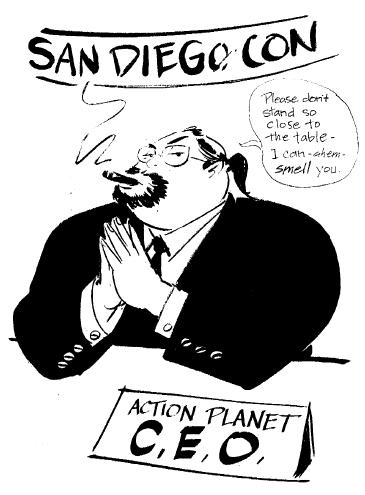
Another funny and probably too accurate caricature of your erstwhile editor by Mr. Blevins.
The second issue of DRAW! is f inally here It seemed at times as if the sophomore curse would never let us go: Quark g remlins, computer vir uses and fried hard drives, wor m cor r upted f iles and the hor ror and tragedy that unfolded on September 11th which drained me of any desire to do anything for several days. Like most I just watched TV, shocked, saddened and ang r y!
But slowly I got my concentration back and was f inally able to f inish the issue. I want to thank many, many folks who helped along the way. Thanks to Doug White at Matrx Systems, my local Mac gur u, for saving my G4, and more impor tantly all the f iles for DRAW! #2 It seemed for a shor t while like all was lost and I’d have to star t from scratch A word to the wise: Be ever vigilant in updating your vir us software and always be suspicious of any e-mail with attachments.
Also another round of applause to my ever patient publisher and proud poppa John Mor row who recently had a deliver y of his own when he and his wife Pam welcomed their daughter Lily into the world
Big thanks to our contributors this issue: Klaus Janson, Phil Hester, Genndy Tar takovsky, Bret Blevins, Ande Parks and Steve Conley who really came through at the wire with the Fed-Ex clock ticking down. And a tip of the hat to Brian Mor ris for transcribing three of the inter views for this issue.
I attended San Diego Comic Con this year and had a g reat and exhausting time meeting fans of DRAW! and making the rounds The overall feedback I got on our f irst issue was, “DRAW! is g reat when is the next issue?” I spent a good par t of the con walking the massive show floor (SD was even bigger this year) through the biggest crowd of comic, sci-f i and toy fans I have ever seen I was on a mission, though: To track down and get some of my fellow pros to ag ree to do some ar ticles in future issues. I won’t spoil the sur prises yet, but just about ever yone I asked has ag reed. So you can look forward to many of the top comic and animation professionals from Disney, Mar vel, DC, Car toon Network, Image and Europe doing ar ticles on tips and tricks and how-to demos in the upcoming issues of DRAW!
The DRAW! message board is up and r unning, so please post feedback and ask questions at: http://66.36.6.76/cgi-bin/Ultimate.cgi I plan on building up more of a web presence for DRAW! in the coming months, so surf on over We’ll be back in stores with #3 in December, just in time of the Holiday season, so pick up a few extra issues; they make g reat stocking stuffers!
E-mail: mike@actionplanet.com
Website: www.actionplanet.com
Mike Manley, editor
Snail mail: PO Box 2129, Upper Darby, PA 19082
FULL PAGE: 7 5” wide x 10” tall $300
HALF PAGE: 7.5” wide x 4.875” tall $175
QUARTER PAGE: 3.75” wide x 4.875” tall $100
INSIDE COVER OR BACK COVER: Please Inquire
GET THE T WOMORROWS T WO-FER!
Prepay for two same-size ads in DRAW!, Comic Book Artist, Alter Ego, Comicology, or any combination, and save! (Display ads are not available for The Jack Kirby Collector.)
FULL PAGE: 7.5” wide x 10” tall $500 ($100 savings)
HALF PAGE: 7 5” wide x 4 875” tall $300 ($50 savings)
QUARTER PAGE: 3 75” wide x 4 875” tall $175 ($25 savings)
INSIDE COVER OR COLOR BACK COVER: Please Inquire
Rates at left are for black-&-white ads, supplied on disk ( TIFF, EPS, or QuarkXPress files acceptable) or as camera-ready ar t. Typesetting ser vice available at 20% markup. Due to our already low ad rates, no agency discounts apply.
Send ad copy and check or money order in US funds to:
TwoMorrows
1812 Park Drive Raleigh NC 27605
Questions?
Phone: (919) 833-8092
Fax: (919) 833-8023
E-Mail: twomorrow@aol.com
We also accept Visa and MasterCard! Please include card number and expiration date.
n the last three decades the comic book industr y has gone through more than one changing of the guard, a myriad of “hot” styles, and is currently being impacted by technology, in ways that can’t be predicted yet The traditional roles of penciler and inker are shifting, changing, as are the tools and techniques they employ in their craft While many ar tists struggle to deal with these changes, the comic book inker and his or her pivotal role in the creation of the modern comic is undergoing perhaps some of the most rapid changes due to the prevailing styles of more open ar t, the looming “Boogey man ” of “digital inking,” slicker printing, and the heavier, more dominating role of the colorist in the final look of the ar t
Despite all of this, or maybe because of it, few inkers have stayed on top and in demand like Klaus Janson. From his early journeyman work at Mar vel and DC to his memorable collaborations with Frank Miller on Daredevil and again on Dark Knight, Janson has stayed hungr y, influential, in demand, and in style His bold, distinctive and textural inking has lavished the pencils of just about ever y top penciler in comics and elevated the work of many weaker pencilers In his career he’s worked on just about
ever y major title for Mar vel and DC
Not content to merely ink the pencils of others, Janson has also successfully taken his turn at penciling as well, applying his dynamic and noir-ish style to several works like Batman, a Punisher mini-series for Mar vel, and Batman/ Spawn to name but a few DRAW! magazine caught up with Janson at his NYC studio to get a “how-to” demonstration and inter view from this master of pen and ink
DRAW!: At what age did you decide you wanted to become a comic ar tist?
KLAUS JANSON: I remember the exact f irst time when I came across comic books I was about 6 and walked into this Ma and Pop store two blocks from my house Although I came in to purchase some candy, this homemade rack of comics mesmerized me It was a sunny after noon and the dust was floating in the light right above the rack. I bought a few and I was hooked from then on. This was the late Fifties, ’58, ’59. My family and I emig rated in ’57 from Ger many At that point there was really nothing to buy except the Weisinger Super man line A few years ago, when the family house was sold, I went back to clean out the attic where I stored the billions of comics I bought in my childhood. What sur prised and amused me was the high amount of comics I had from that period: Lois Lane and Jimmy Olsen and Superboy and Superman I had to adjust my selfimage a bit when confronted with evidence that I wasn’t as cool a kid as I remember
I lear ned a lot of English from comic books I was able to put the words together with the visual and dope out the meaning of the words. I think this left a huge impression on me and to this day my obsession is stor ytelling the ability to communicate both as it applies in general and the specif ics of comic books and ar t
Shor tly after I star ted buying comics, I began to cut the f igures of characters out and reposition them on a blank sheet of paper to create my own stories. Actually that is a lot of fun and I recommend it as an ar t exercise, but thankfully the thought occur red to me that I was losing these books so I star ted drawing comics instead of destroying them That was the moment when I realized that drawing was not only fun, but could be done for a reason.
I remember the exact moment that I decided to be an ar tist I was raised in a fairly dysfunctional family One of the spokes on that dysfunctional wheel was my father, whom I have never met As a kid there was nothing I wanted more than a dad We had a watercolor hanging up in the apar tment we lived in and one day I asked about it. I was told that my father did it I remember standing and looking at it with new meaning If I couldn’t be with my dad, I thought, perhaps this was the next best thing to be like my dad It was precisely that moment that I committed to being an ar tist.
DRAW!: Now I understand you worked at Continuity Studios, the studio r un by Neal Adams and Dick Giordano that did adver tising as well as comics. Can you tell us what your duties were there and how you came to work there?
KJ: The way I found myself at Continuity was through Dick Giordano I had read about the tours
that DC was offering in one of their books. I took it upon myself (I think I was 17 at the time) to join one of these tours. So I dressed up (a tie, even can you imagine!), got on a train (I was living in Connecticut) and went up to DC Comics one Friday after noon during summer break The receptionist told me they didn’t do tours anymore I was, of course, hear tbroken So I went into this spiel about coming all the way from Connecticut and I was wearing a tie couldn’t they give me a break? So they tur ned out to be extremely nice.
The receptionist called some people, and Jack Miller (the editor of “Deadman”) came out and took me around It was a ver y nice thing to do That was my f irst exposure to “real” comics and how it was connected to a larger industr y I also met Neal Adams who was in the off ices working on an Adam Strange cover for Strange Adventures. He was interested specif ically in a cer tain color combination (the red of the costume against an olive g reen in the backg round) that he believed created more depth in the cover It was cool Then I met Dick

Giordano who recognized my name from all the letters I used to send him at Charlton Comics. As it tur ned out, he lived in Stratford, which bordered the town of Bridgepor t, where I lived. Through some effor t on my par t and some ver y funny coincidences, we car ried on a friendship from that point I was involved in producing a fanzine with my good friend David Kasakove, and we of course decided to exploit the only pro we knew and inter viewed Dick for the second issue. From there I did a bit of ghosting for Dick, some backg rounds, and some work for Sal Trapani, Dick’s brother-in-law Actually, a stor y I never told was about my f irst professional ink job Sal was inking Herb Trimpe on the Hulk I might’ve done some backg round
work, but Sal called me up and said he was in a jam. Could I ink the last three pages while Sal went out of town on some business? “Sure,” I said, “lemme at ’em.” He gave me three pages on Friday which had to be done by Sunday night So I did them I think this was the f irst time the Wendigo was introduced As ever y young ar tist does, I got extremely cocky and smug about how easy this was I remember the next day meeting Dick and being so self-assured that I was being falsely modest “At least they were printable, Mr Giordano.” Well the punchline was they weren’t! John Romita yelled at Sal and said they couldn’t use these pages and Sal wound up re-doing them Something about the line being too fat Needless to say it took me awhile to recover from that one I didn’t emerge from my cave till six months had passed
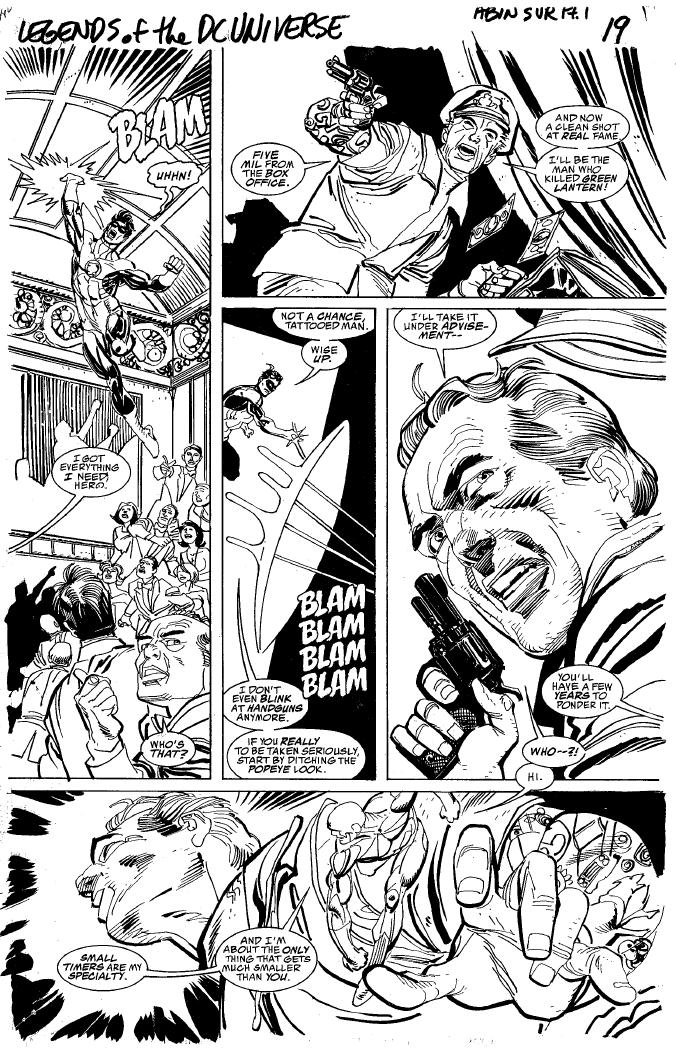
PREVIOUS PAGE: Pencils by Gil Kane.
ABOVE: Janson’s inks of the same page, spotting blacks to help direct the reader ’s eye through the compositions.
DRAW!: There seemed to be a whole g roup of you “Cr usty Bunkers,” a nickname for the g roup of young turks working there in the early- to mid-’70s, who def initely had the Adams and especially the Giordano influence in your work. Some of you guys even did backg rounds for a while I remember that f irst Spider-Man vs. Superman Treasury Edition. Boy I poured over that comic studying all the technique in there and that Giant-Sized Howard the Duck with the Sal Buscema stor y in there inked by you Can you f ill us in a bit on that, and if Giordano or Adams ever sat you guys down and specif ically showed you cer tain techniques or explained theories?
KJ: So, as an extension to working with Dick, I occasionally found myself at Continuity It was a g reat time and I did do some of the Cr usty Bunkers work but probably not as much as some other guys I remember sitting at a desk once and inking “Fahfred and Grey Mouser” over Howard Chaykin I was noodling the backg rounds and decided (which the studio allowed) to broaden out and do some unimpor tant clothing elements. I was working on a knife and a belt buckle when Neal comes strolling by, glancing at what I was doing I was so in awe of Neal and Dick that it was all I could do not to vomit, let alone do a decent inking job My hand star ts
JANSON: One way an inker can work hand in hand with a penciler is by adding blacks. My goal here was to help make the focal point of the panel more obvious.
FCaptain Mar vel and Black Adam duke it out from the Power of Shazam! graphic novel.
CAPTAIN MARVEL, BLACK ADAM AND ARTWORK © 2001 DC COMICS

rom his longterm runs on mainstream icons like Superman, to his heralded work on the Power of Shazam! hardcover graphic novel, to the series by the same name for DC Comics, to his just completed US Agent three issue mini-series for Mar vel Comics, Jerr y Ordway has stayed in demand and in the top echelon of the comics field. In this issue of DRAW! we finish up our inter view with Ordway and get a great look behind the scenes with this writer-artist, his working process and techniques.
DRAW!: In the f irst inter view with you in DRAW! #1, we left off at the inking stage of doing comic ar t, something which you really excel at, being to my mind and humble opinion one of the best ever in the business.And nothing against the many talented guys who’ve inked you, but no one inks you better than you. Your inking is “drawing in ink,” as opposed to tr ying to make a series of really cool slick lines Your inking is full of a variety of line weights and textures that not only describe the human for m and the super-human for m, but also make brick walls and sofas appealing to
JERRY ORDWAY: Thanks a lot, really, but I’m neither as brilliant, or terrible as some think There are days when I feel like I’ve lost the ability to draw, let me tell you! Comic work is so dependent on keeping your drawing muscles limber, that a weekend off can put you off your game. I took years off from drawing interior work following the Power of Shazam! g raphic novel, with few exceptions When I ag reed to draw Gog for DC a few years later, I did so just to see if I could still do it, and on a monthly schedule I sur vived, and succeeded, but just barely Now it’s a few years after that and I still am not up to speed compared to before my hiatus.
DRAW!: So I guess my f irst questions will be more technical just to get that out of the way fast What pen points do you use?
JO: Well, I star ted out using a Hunt #102 Crowquill tip, switched over to the Gillotte #659 crowquills, and am now back at #102s again, after twenty years, due f irst to the scarcity of the Gillotte’s and then to the poor quality when I f inally found them Like ever y ar t tool known to us, none are as good as they used to be. The Hunt tips are not the inflexible “nails” I got used to so long ago, either. They are now closer in feel and flex to the #659 quill Only inkers will get this, Mike the rest of the world will think I’m talking gibberish
DRAW!: Are you primarily a pen or br ush man?
JO:`I am a pen man, with few exceptions. Occasionally, when inking a large drawing or cover, I’ll use a br ush, as an ink line would seem too “slight.” I love doing textures with a br ush, though. That Joe Sinnott rendering on rocks and debris from his Kirby days on the Fantastic Four is always inspiring You need a br ush to do that
DRAW!: Do you have a par ticular way of working, say all the pen work f irst and br ush work second?
JO: I generally do that, though there are times when I can’t wait to f ill in the black areas on a panel or something, and I’ll get out the br ush and f inish it I tend to work on a batch of pages, in order, leaving blacks to be spotted and erasing, until I’m ready to send the work in to the editor Then I erase the pencils and go over ever ything, f illing in solid areas and looking for places that need a beefed-up ink line to make the f igures “pop,” all the while watching the clock for the Fed-Ex pick-up deadline!
DRAW!: Do you prefer to use the pen for one type of inking, and the br ush for another, like inking hair?
JO: Well, I str uggled with that in the beginning, like most folks, tr ying to use pen for ever ything, until I lear ned that some things look better in br ush, like the rock textures I mentioned before. Dark wavy hair, for example, needs a br ush to keep you from tr ying to draw ever y single hair A br ush helps me pick out the highlights with feathering
DRAW!: Who were the ar tists you lear ned from and emulated when you star ted?
JO: I star ted out tr ying to be Neal Adams, as inked by Tom Palmer, but two things conspired against me. First, in the late 1970s, there were dozens of ar tists tr ying the same thing, and second, it was an absolute low point in comic book printing Even Tom Palmer’s work wasn’t reproducing well In reaction to that, really, I looked to Wally Wood, whose work was simple and solid at the time He kept the rendering to a minimum and spotted plenty of blacks to compensate for the generally weak coloring. When I got my f irst regular assignment, inking an Adams clone at the time, Rich Buckler, I stood out I inked it in a simpler way The book was All-Star Squadron, set in the 1940s, and Roy Thomas, the writer, made sure I was exposed to lots of g reat old work by Mor t Meskin on “Johnny Quick,” Joe Kuber t on “Hawkman,” Jack Bur nley on “Star man.” I also did a lot of swiping in ink of Alex Raymond’s Flash Gordon from the 1930s, transfor ming Buckler’s f igures into a more appropriate retro look

Note how Ordway reworked the figure. ©
Ordway’s original cover sketch, paying tribute to the classic Nick Fur y cover by Steranko.

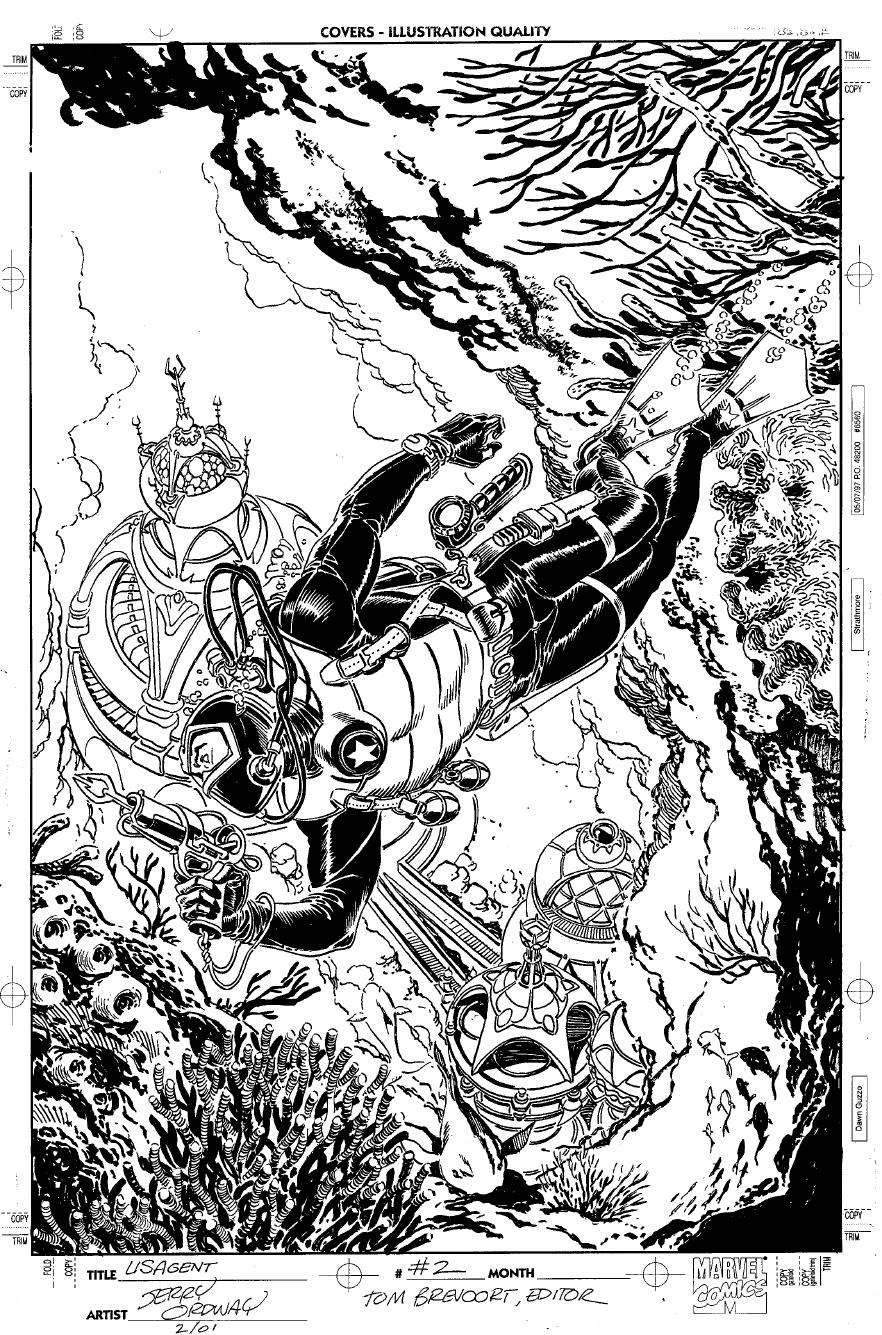
ABOVE: The final inked cover.
As a kid, I was in awe of Wood and John Buscema On All-Star, I studied the guys who inspired them, and added all sor ts of rendering tricks into my reper toire from Hal Foster, Alex Raymond, Noel Sickles, Milton Caniff, Roy Crane and others Then, after a while through repeat use, they became my own bag of tricks, so to speak. It was like comic book school. Doing a period book as your f irst ongoing title is quite the crash course I had to draw and ink World War II-era soldiers, planes, boats, locales. It was really daunting, but a g reat experience
DRAW!: And whom do you admire today? I know I admire many ar tists whose style of craftsmanship wouldn’t be necessarily compatible with my style
JO: I think Carlos Pacheco and Alan Davis are ter rif ic I like Erik Larsen’s dynamics Br yan Hitch’s work on The Authority was g reat There are a lot of talented people out there. The competition is overwhelming, really Gil Kane told me once how hard it was for him to compete with the level of drawing in the industr y, and that really floored me, but I understood. In a way, though, as good as they are, I can’t imagine anyone delivering a body of work as g reat as Hal Foster’s or Raymond’s or any of the g reats from the past I mean who among us can have the impact of a Jack Kirby, John Buscema or Wally Wood?
DRAW!: Are you conscious of an “Ordway style” when working? Or is it more like handwriting? Automatic, unconscious
JO: I think when you’ve been around a while, your work becomes like your signature. As much as I strive to get better, I am still following a cer tain path with my work

From creating, producing and directing the hit cartoon Dexter’s Lab to producing the mega-hit and 300-million dollar merchandising phenom The Powerpuff Girls, Genndy Tartakovsky is the driving force behind some of the best and most popular (and Emmy winning) cartoons on the Cartoon Network a growing cable titan which draws an average of 1.26 million viewers daily. From watching Tartakovsky’s shows it’s obvious that he loves and knows good cartoons, from the classic Warners and MGM cartoons to UPA and Bullwinkle to the stylized art of Disney and Mar y Blair.
DRAW! Editor Mike Manley inter viewed Tartakovsky from his office in the Cartoon Network studios located in Hollywood just after the big premiere of his new show, Samurai Jack. Jack, a Samurai warrior, is thrown into the future by the demon Aku after a great battle Landing in the far distant future, Jack searches for a way back to his time as he travels an Earth which is now controlled and run by Aku. The Earth is overrun by aliens and villains of all sorts. In his search for a way home Jack has many adventures, and using the ways of the Samurai, he helps many people who are also victims of Aku
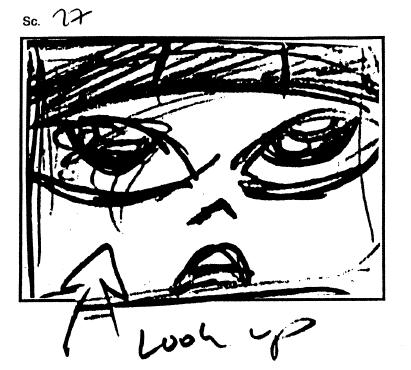

DRAW!: So you were bor n in Moscow? And you moved to the States when you were seven with your brother, mom and dad, who was a dentist
GENNDY TARTAKOVSKY: Yes
DRAW!: Where did you move to?
GT: We moved to Columbus, Ohio for about three years and then f inally settled in Chicago where I mostly g rew up
DRAW!: Did you read comics and watch car toons at all in Moscow before you moved to the US?
GT: Yes There were some but there wasn’t anything like here There were a couple of news prog rams, some variety prog rams and there was one car toon that I can’t remember. When I moved here, then it’s like an explosion of enter tainment, like Super Friends and all that, Hanna-Barbera shows, and Wonder Woman and Batman Then I saw comic books and I saw they had so much to offer
DRAW!: So you saw the car toon versions of the characters before you saw the comic book versions?
GT: Yeah, I f irst got into car toons and like all kids, I was kind of in love with car toons Then I saw comic books for the f irst time and I was like, wow! I was into the super-hero thing, so I bought up as many Fantastic Fours and Captain Americas and Spider-Mans as I could f ind
DRAW!: Were those the Marvel’s Greatest Comics and the Marvel Tales? The classic reprints?
GT: The original stuff This was back in the John Byr ne r un of Fantastic Four I wasn’t tr ying to buy the old Kirby stuff
DRAW!: So as a kid when you discovered comics, did you discover any local comic shops and did you go to a regular comic shop ever y week?
GT: Yeah, we had this place right in the neighborhood called Yesterday, Today and Tomor row It was where I went and I would spend hours there looking at comics. We didn’t have a lot of money and this was when comics were thir ty-f ive cents so I’d buy a little bit here and there I really liked to take my bike on weekends and ride around to all the garage sales and pick up as many comic books as I could at those places because those comics were ten cents, f ifteen cents.
DRAW!: Same in the shop I used to visit, the owner would have a rack put aside where he’d have ten cent comics or f ifteen cent comics that were kind of damaged so you could f ind all kinds of cool stuff there So at that age, were you thinking, “Well, I want to be a car toonist,” or “I want to be a comic ar tist or animator”?
GT: Well, I couldn’t draw ver y well and so I copied from comic books, but my brother who was two years older was actually better than me. I kept tr ying but it was def initely a str uggle to draw when I was young But I loved it and I kept doing it Then I found myself a Senior in high school, and I loved animation and I still loved comic books I decided what I wanted to do was to go to college. I didn’t think that I could really make a living being an animator This was in Chicago and there’s no animation industr y, so I was kind of sheltered and didn’t realize that there’s all this stuff going on in Califor nia So I decided, well, I’ll make animated f ilms on the side and I’ll go into adver tising. I was aiming to do stor yboards for commercials so I went to Columbia College straight out of high school But in the f irst semester they had alphabetical registration. So my last name begins with a “T” and so ever y single class that I wanted to take was closed, full.
DRAW!: Aw, jeez.

GT: And you take your other classes, and the second semester you take the ones that were closed I was like, “That sucks,” so I saw this animation class and it would f ill one of my elective credits “Oh, g reat I’ll take animation and lear n more about it


ABOVE: In the course of developing the show the design of Jack underwent a variety of changes. Like a clay figure he was remolded and pushed, stretched, shrunk and altered by the designers and the storyboard artist pencils under Tartakovsky’s direction until the final feel and design were arrived at. The goal was always to keep the design dynamic

yet simple, a very difficult and demanding process. The designs on the top of the page show the drawings from the storyboard artist that best captured the feel and helped define the character and the direction for all the artists working on the show, especially the storyboard artists.
I love animation, so I’ll just f ill a credit and lear n more about my “hobby.” I took the class and suddenly a whole new world opened up. You know, I really got into it and I was pretty good at it I mean, I went to the top of my class in a couple of years Then I decided to switch my major and study Film and Animation
DRAW!: They had a Film course at that college?
GT: Yeah, they had a Film depar tment with a really small animation depar tment. Like tiny.
DRAW!: Now what year is this?
GT: This was ’88 and ’89
DRAW!: Did they give you the principles like the old “Squash and Stretch,” the old Preston Blair kind of thing?

GT: Yeah, I just lear ned all the foundation stuff. I also took Life Drawing classes and all that kind of stuff, too
DRAW!: Were you still thinking that you would like to tr y comics at that point or had you pretty much decided you really wanted to go into animation?
GT: No, because I could see how good a draftsperson you had to be for comics and comics purely relied on your skill as an ar tist I would go to some of the mini-cons in Chicago and I would stand there and watch John Byr ne draw for four hours and I knew that I was nowhere near anything as good as him to even attempt to make a career of that.
Being a comic book ar tist seems even a harder career than animation because, I don’t know, it just seems like it was even more unrealistic [laughs] Because there’s just so few comic book ar tists and it’s only some who are successful.
DRAW!: Well, I think in animation, there is more specialization. You can f ind ar tists who are really good at doing backg rounds but are not good at doing people or are good at doing people and not good at doing something else, where in comics, you have to do ever ything well.
GT: Tr ue. And the passion that I had was more for animation, too. Even though I loved comics and I would become a better comic book ar tist if given the time, I still had this inner drive to make f ilms.
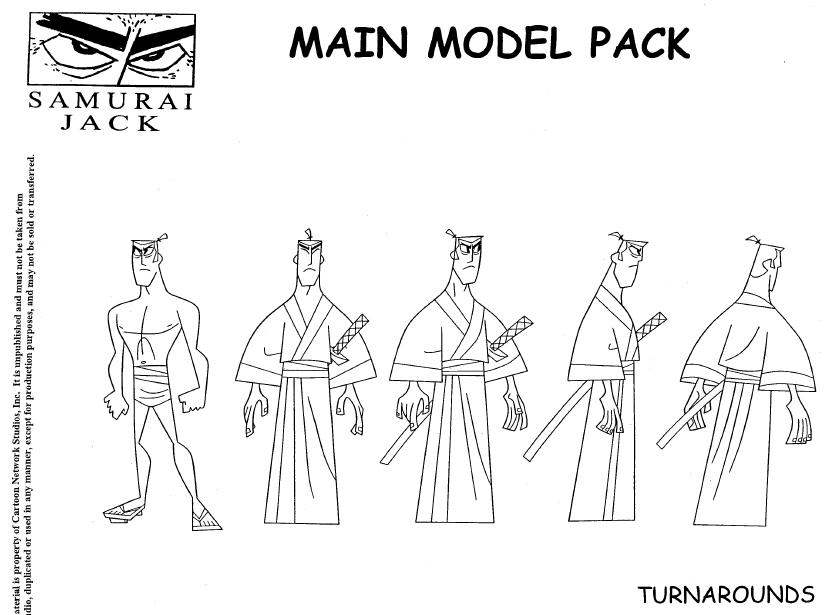
DRAW!: So, actually getting to do Dexter now as a car toon, and doing the Dexter comics, you’ve sor t of achieved both dreams
GT: Yeah I mean, when I got to do the f irst Dexter comic it was amazing. It was like a dream come tr ue.
DRAW!: And I know you just did the twenty-f ifth issue and is that out yet?
GT: That’s coming out in September.
DRAW!: So now you g raduated from college in Chicago, right?
GT: No I f inished two years in this college and then I realized that there was this college in Califor nia called The Califor nia Institute of Ar ts which is founded by Disney and has been around for a while






Steve Conley has one foot standing in the past traditions of comics and sci-fi, and the other rushing or surfing toward the future of both mediums. From his own Eisner and Eagle award winning daily web comic, Astounding Space Thrills to his partnership with Rick Veitch in the 24-7 virtual comic book convention and destination portal comicon. com to the Toonarama web comic syndicate, Conley is an artist fully positioned at the nexus of the changing artform of comics.
DRAW! editor Mike Manley interviewed Conley from his busy Alexandria Virginia studio between juggling jobs for major clients like THQ, GTE and overseeing the several websites in the web empire he and Veitch share including The Splash daily news page and the ever busy message boards at comicon com
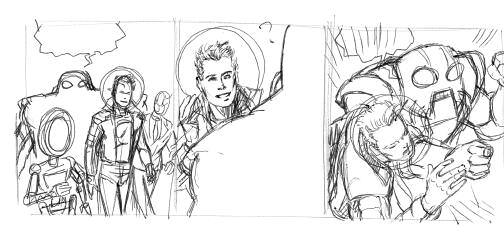
DRAW!: I guess the best place to star t is to give us a little backg round on where you hail from and how you got interested in comics.
STEVE CONLEY: Sure. I’m originally from Long Island, New York. I was bor n smack dab between the moon landing and the bir th of the Inter net, in ’69. And I’ve been drawing for as long as I can remember, drawing comics for as long as I can remember, reading comics as long as I can remember
DRAW!: You were drawing comics in g rade school and high school, doing your own comics?

TOP: Scan of the original ballpoint sketch for an installment of the AST online comic strip.
BOTTOM: The daily comics are colored in Adobe Photoshop. Each color shape starts on its own layer and the linework (as “inked” and impor ted from Macromedia FreeHand) resides on a layer above the color layers. The black linework layer is then set to “Multiply.” This preserves the line quality and reduces the appearance of off-color pixels on the borders between colors. For the effect in panel 3, the entire comic strip is flattened onto a new layer (option-”Mer ge V isible Layers”) and a small lens flare was added to the point of impact. © 2001 STEVE CONLEY
SC: Oddly enough, I don’t ever really remember drawing other people’s characters. I don’t know how that relates to other self-publishers. I don’t know if self-publishers always drew their own characters or if they were drawing Mar vel’s characters or DC’s characters I never found myself drawing Spider-Man or Super man. I was always drawing my own guys.
DRAW!: That’s interesting. You’re saying that you were always drawing your own characters as opposed to drawing characters like the Thing or the Hulk or Captain America or whatever
SC: Right
DRAW!: Were you more interested in science-f iction or adventure?
SC: In the best sense, I think they’re one and the same I’m sure that having f ilms like Star Wars hit when I was six years old and having Star Trek in rer uns when I was g rowing up helped a little bit.

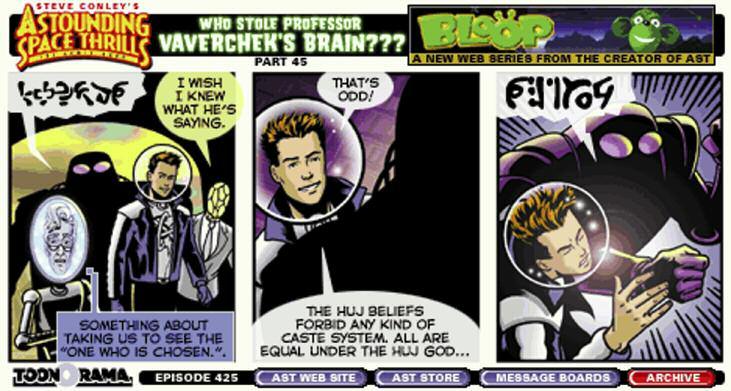
But I always dug comics For tunately, the f irst comics I ever had g rowing up, I didn’t have a lot of money I g rew up in not the most well-to-do sur roundings on Long Island I mean, don’t think Great Gatsby. [laughs] Think Steve Buscemi f ilm, something like that. I had a lot of the smaller, paperback versions of the Mar vel comics. Remember when Spider-Man and The Hulk and the Fantastic Four were all reprinted in paperback size?
DRAW!: Right, I have some of them They’re g reat reprints, too
SC: Those are the comics I remember reading, devouring
DRAW!: So, as a teenager, you were obviously a fan of sciencef iction, I take it, and reading science-f iction novels as well?
SC: A lot of Ray Bradbur y Really, any kind of material I tended to like histor y better than I liked other subjects Some of my favorite teachers were histor y teachers
DRAW!: Really?
SC: They were just really ter rif ic people. I think they understood the material and they were enthusiastic for it. I
The top image shows the higherresolution file as created in Photoshop. That image is then reduced to 72 DPI and brought into ImageReady for lettering and placement into the “tooncasting” framework of buttons and branding (seen below). In AST, the word balloons are translucent. “Word balloons are a ver y peculiar literar y device and I wanted to see what I could do to mitigate their intrusiveness.”
© 2001 STEVE CONLEY
remember math teachers appearing par ticularly uninterested in the work they were doing I tend to think that if you’re good at math, the last thing you want to do over and over again is go over basic addition or geometr y. [laughs]
DRAW!: Probably.
SC: But a person who really loves histor y can probably f ind something of interest in going over the smallest event of the Civil War or something like that Or the causes and ramif ications of those events
DRAW!: Yeah, that’s tr ue Now, did this lead you into being interested in retro science-f iction, which is, of course, what AST is sor t of a combination It’s like moder n retro, where you take some of the really cool stuff or the iconic imager y of some of the retro science-f iction, but you’re doing it with a moder n take You’re not a slave to the past.
SC: I don’t know if I really g rew out of anything or if it was just a reaction to things by the time I produced a few comics in high school and in college, some super-hero, some science-f iction
The f irst science-f iction comic strip I did in college was called Anomaly and it was about a Buck Rogers-type who ends up in a Mad Max-type future It was full of weird animals and weird situations and lots of puns and was ver y goofy Basically, one
Along with this f ieldwork, invent f igures that express an inner state of mind. Think about people you know each individual has a temperament that guides his or her physical expression of emotion Use your experiences of them to create imaginar y personality types that can be described in a word: Tacitur n, vivacious, withdrawn, jolly, gloomy, quiet, raucous, timid, brash, sensitive, boorish, intuitive, obtuse, agg ressive, obliging, etc Imagine them ang r y, sur prised, disappointed, delighted, fr ustrated, amused then tr y to capture some of their character traits or emotions in simple gesture sketches like these:
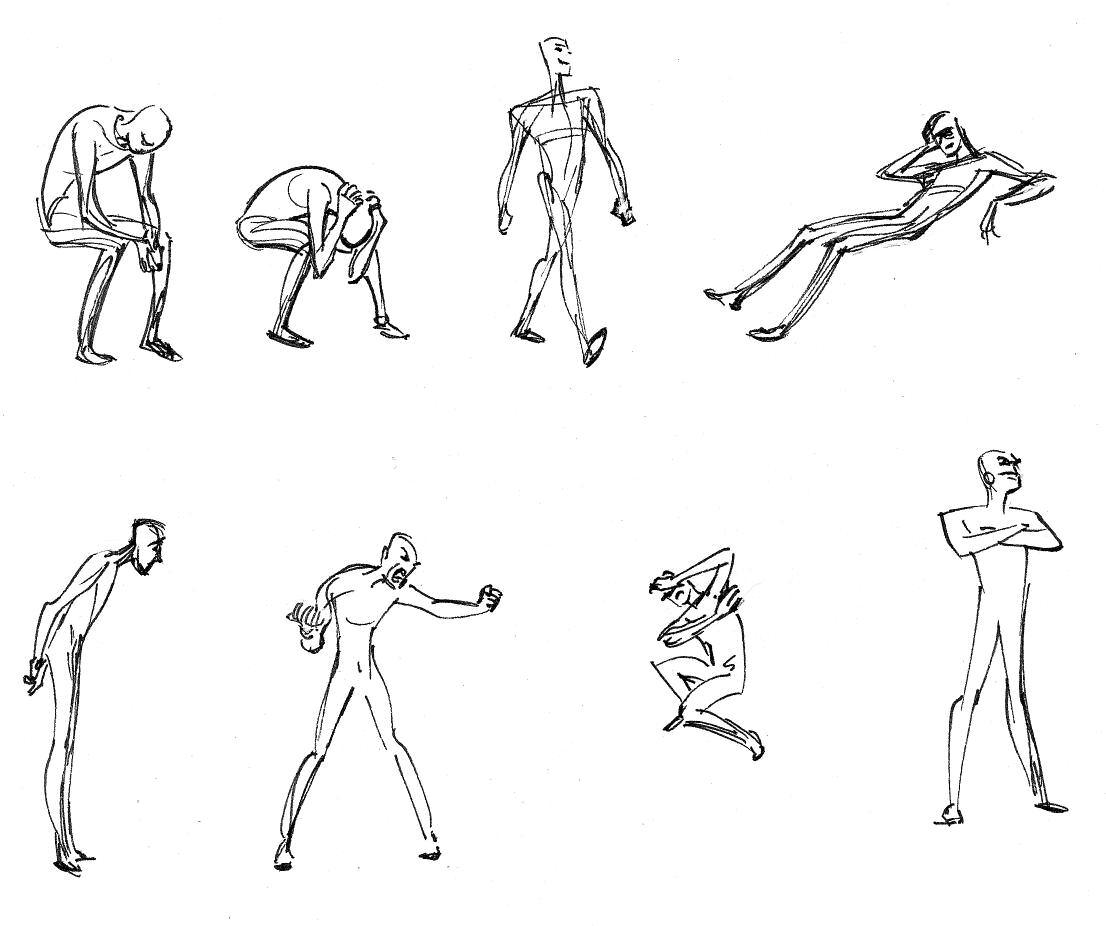
This aspect of visualizing f igures requires you to develop acting skills You must feel the emotions in your own mind and body, then project yourself into the character you are drawing Become that person while you are making the drawing get “inside” them In my view this is the most rewarding pleasure of drawing people, because the subtlety and variety of human emotion is endless Exploring an inf inite range of body types and facial features experiencing the breadth of the human condition is an inexhaustible, intensely fascinating adventure. Delving into car tooning or fantasy images escalates the fun into a gaudy, car nival excitement any flight of fancy that creates a convincing personality is its own delicious reward reality poses no limits.
I’ve fashioned the rest of the ar ticle as a sor t of annotated “talking sketchbook” of expressive f igures Mostly human, mostly female, but all united by the presence of a mind animating the body You’ll f ind a wide range of styles but they all share the indispensable quality the illusion of life
Note the changes in posture and expression that reveal the person’s shifting thoughts throughout these sequential “snapshots.”
The ar tist is completely focused on her drawing.



She pauses to judge it... then retur ns to work on a troublesome spot.
ntil recently Phil Hester almost seemed to be one of comics best kept secrets. The easygoing mid-western manner and jovial demeanor of this father of two, belied the dark and gothic stories and images churning in the mind of this writer-artist dynamo who toils away from his Iowa studio. In this bucolic setting dark worlds of occult heroes and sci-fi adventure spread out to fill comic racks across America.
With seeming ease for most of his career Hester has straddled two worlds, jumping back and forth between the small press “indy” comic world with books like his Eisner-nominated “The Wretch,” to mainstream hits like DC’s top-selling book Green Arrow, written by Kevin (Clerks) Smith.
The Coffin, his latest mini-series for Oni Press, has been optioned by James Cameron for a big budget Hollywood movie.
DRAW! editor Mike Manley caught up with Hester at his home studio between fielding Hollywood phone calls and fixing lunch for his kids.
DRAW!: So, Phil, why don’t you go ahead and tell us a little bit of how you got into comics, just a little bit of the origin of Phil Hester
PHIL HESTER: The secret origin?
DRAW!: The secret origin of Phil Hester, yes.

PH: Well, I star ted during that black-&-white explosion, Tur tle Time
And basically, what I keep saying is, if you could hold a pencil at that time, you could probably get work and I was the proof I was, like, nineteen, twenty years old and I couldn’t draw but there were so many little companies that were hiring people then because there were so many books glutting the market. I was pretty good about sending my work in on a regular basis to get reviewed and get advice from editors and publishers.
DRAW!: Who was on your regular hit list of people and companies you were submitting to?
PH: Well, when I got out of high school, of course, I was ready to draw X-Men immediately, like ever ybody that came out of high school, thinking, “Here I go! [laughs] New York, here I come ” Eliot Brown, I think, sent me a really constr uctive note on a for m letter that sor t of put me in my place, even though it was pretty helpful. And that actually inspired me to send my stuff to as many people as I could as often as possible
DRAW!: What time was this? 1985, ’86?
PH: 1984. And so, for the next two years, I had this regimen. I would send a packet ever y four to six months to everybody and in ’86, there star ted to be a lot more comic book companies, and so my odds improved.
DRAW!: So you were sending pencils of established characters like Super man, or whatever?
PH: Yeah, established characters I would tr y to save work by having a submission that had both a Mar vel and a DC character in it [laughs] I’d have the Hulk f ight Robotman and I could send it to both Mar vel and DC And I’d throw Airboy in there so I could send it to Eclipse. But I would send it to ever ybody. You know, I still have at home a bulletin board with all my rejection letters on it and it’s huge It’s gotta be over two hundred rejection letters
DRAW!: Wow! So your stick-to-it-iveness is really a Phil Hester trait.


© 2001 PHIL HESTER
PH: Yes That’s probably the only secret I’m going to impar t to anybody I mean, no one’s going to lear n any draftsmanship skills from me but my career’s all about perseverance, I think
DRAW!: Well, ever y freelancer, ever y ar tist you talk to in the business, basically, it’s the same thing. You go through that gauntlet
PH: Oh, yeah I have all these buddies from both high school and ar t school that were really super-talented, guys that I thought were much more talented than I was, and they didn’t make it past their f irst por tfolio review Mike Carlin ended their careers in one swoop just by saying, “Your anatomy needs work ” [laughs] And then they bailed
DRAW!: I still remember my f irst trip to Mar vel was the same way I remember Carl Potts just looking at some inking sample I did and pointing to something, like some stomach muscles I inked and that was it.
PH: A lot of guys can’t take that and luckily, I don’t hold my work in that high regard [laughs] So when somebody says, “Change something,” I go, “Okay ”
DRAW!: Well, I think that’s an impor tant thing, also, to impar t to younger people reading the magazine too, is that you have to be open to criticism I mean, that’s par t of this collaborative medium.
PH: I think that’s the number one thing I got out of ar t school. I have a Bachelor of Fine Ar ts in Drawing from the University of Iowa, and that prog ram does not teach you how to draw comic books. That prog ram teaches you how to draw and paint and par t of your f irst year or two in ar t school is dumping out all the crap you lear ned before, all the bad habits you lear ned in high school from tracing Frank Frazetta drawings or whatever And that’s what I think ar t school just kinda busted me open and let me take in as much as possible It made me ready to see stuff like Bill Sienkiewicz or Dave McKean when that stuff came along
LEFT: A page from Freaks Amour drawn by Hester and inked by Ande Parks.
ABOVE: A design for Boneshaker.
IthinktheworthwhileideaItookawayfromartschoolrelates tothevalueofambiguity.Art,whetherit’spaintingormusicor comics,reallyonlybecomesvaluablewhenit’schallenging. Whenyoudon’tknowquitewhattomakeofitandhaveto grapplewithitawhile.Iknowthatrunscountertoalotofthe solutionswelookforascartoonistsasfarascreatingidealized icons,orcomingupwitheconomicalstorytelling,butthat instantofconfusionleadstothemostsatisfyingviewing.
Now,mostofthequirkinessinmyworkisunintentional.It’s justthewayIdraw,butI’mawareofsomeofthecontradictions thereandtrytoexploitthem.WhenI’mdrawingaheroicor gracefulfigurethere’sstillbrutalityandblockinessinthere. WhenI’mdrawingsomeidyllicsceneahighcontrastshadowor somethingwillspillacross.EvenwhenI’mbeingpurposefully uglyandscary,somethingcartoonywillcreepintosetthingsoff alittle.Thatlittlemomentofdoubtiswhatdrawsmetogreat “weird”artistslikeDitkoorKrigstein,orevenTonySalmons.
DRAW!: Sonow,asayoung,youngaspiringcomicartist comingalong,didyouhaveyourfavoriteartistguysyouaspired tobelike?
PH: EvenasakidItendedtoleantowardsweirdness.Imean, IlikedDitkoalotandIlikedWallyWoodbeforeIevenknew whohewas.Icouldseethatdarknessonanoccasionaljobhe’d ink,likeaPowerGirlstory,orsomething,overRicEstradaand

yougo,“Thatlooksdifferentfromeverythingelse.”IlikedJack Kirby,ofcourse,andIlovedGeneColan.AndIgivemyself creditforlikingFrankMillerandWillEisnerevenwhenIwasa kid.Icravedanythingthatwasoutsideofthenorm.
DRAW!: Soyoutendedtolikedark,spookyandmoodystuff, stuffwithatmosphere?
PH: Yeah.MikePloog,Wrightsonandallthat,FrankRobbins, anythingthatwasalittlebitoff-kilterappealedtome.
DRAW!: Soyouwerenotgoinginasmuchformoreattractive mainstreamheroes?
PH: No,Ilovedthattoo.Iloveguyswhodrawpretty.Back then,IlovedPérezandByrneandDonNewton—Cartoony, shiny,pretty.Butatthesametime,Iwouldturnaroundandread aJimMooney“Supergirl”justashappily.ButIcouldseethatI wasgettingdrawntowardshorrorstuffandweirderstuff.When youseeBasilWolvertonanditmakessensetoyou,youknow you’rebasicallygoingtobemessedup. [laughs]
BELOW:Twopagesfrom Boneshaker published byCaliber,written,drawn,lettered,andinked ontoneboardbyHester. BONESHAKER©2001PHILHESTER.
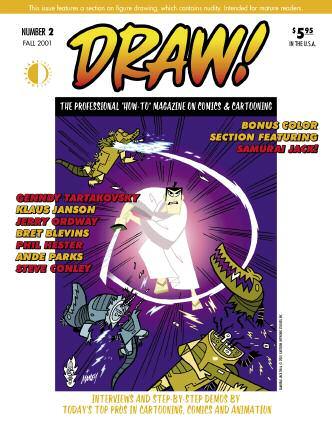

InterviewwithSamuraiJack’sGENNDYTARTACOVSKY,inking tipsandtrickswithKLAUSJANSON,PHILHESTERoncreating andself-publishingcomicslikeTHEWRETCHandGREENARROW andconqueringHollywood,in-depthinterviewandHow-Toby STEVECONELLY,tutoralbyBRETBLEVINS,andmore! (116-pagemagazine) SOLDOUT (Digitaledition) $2.95
http://twomorrows.com/index.php?main_page=product_info&cPath=98_59&products_id=426